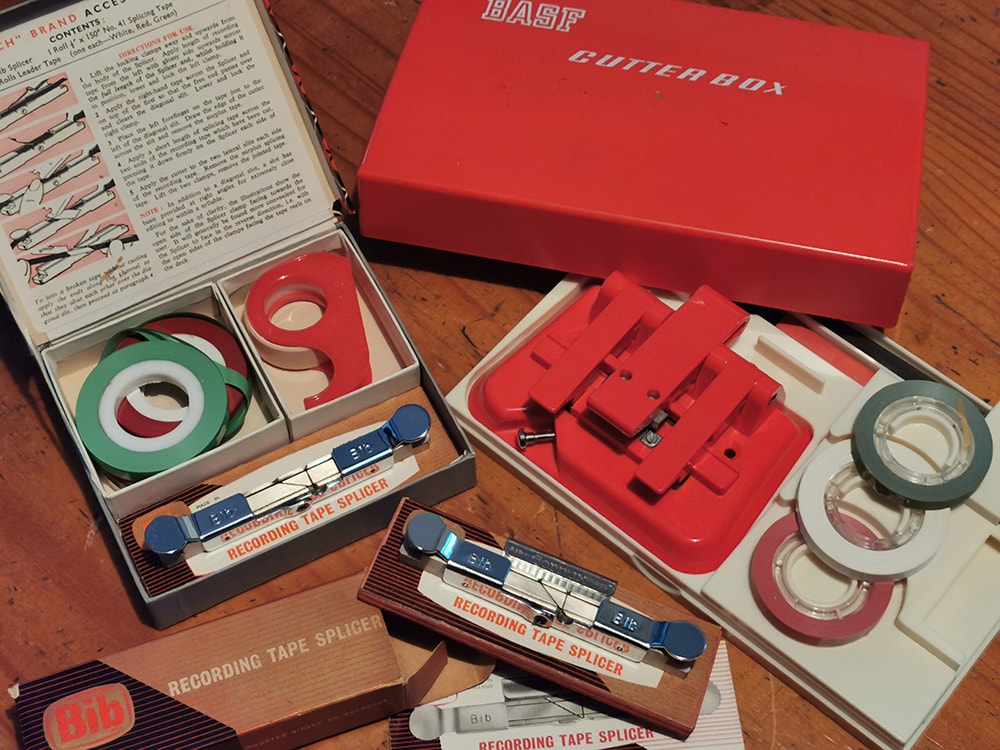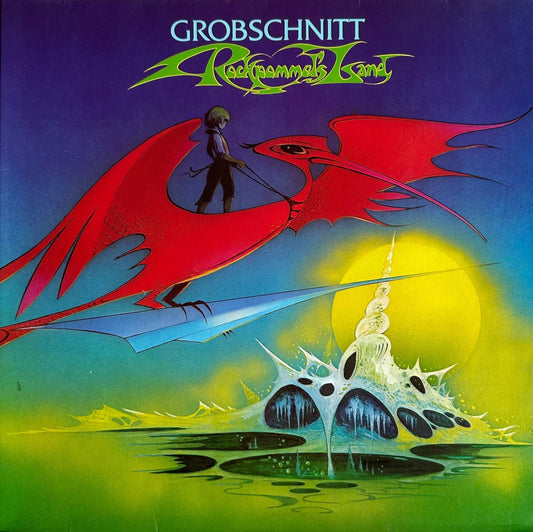It goes without saying that tape deck maintenance – such as cleaning the heads and pinch rollers, periodic demagnetizing, etc. – are essential practices which (circa-2022) only come naturally to studio denizens and habitués, or those music lovers who never forsook open-reel tape. Muscle memory being what it is, I soon reacquainted myself with the ins-and-outs of the regimen, most crucially including splicing. I suspect the same is true for any returnees. Such is the importance, however, of all open-reel-tape-related procedures that I mischievously choose to use them as a cudgel with which further to discourage the unwary from investing in the format this late in the game. Actually, it’s selfish rather than mischievous. I simply do not want to shoulder the blame for inspiring someone to buy, say, a Technics RS-1700, who finds out that there’s an irreplaceable chip the failure of which will render the deck useful only as a boat anchor or doorstop. Caveats aside, however, this is not a primer in tape hygiene, as I presume a certain level of experience among Copper readers. If, on the other hand, you are completely new to open-reel tape despite years as a hi-fi enthusiast, I would steer you or indeed any R2R virgins toward Issue 324 of The Absolute Sound (February 2022), which contains Robert Harley’s superb in-depth primer explaining the basics. Beyond that article’s usefulness, it is also a statement of great import for, in and of itself: TAS’ devotion of this much space on the topic of a virtually-defunct format, in a leading contemporary high-end hi-fi print journal, tells me that the revival is, at the very least, noteworthy. Although his article focuses on the workings of reel-to-reel tape decks and even the actual composition of the tape medium itself, Robert does, however, raise the thorny topic of frequency. Not as in 20 Hz – 20 kHz, but as to how often one has to dig out a demagnetizer, Q-Tips, alcohol, machine oil, rubber cleaner, or other housekeeping tools and potions. As one who cleans pinch rollers more frequently than heads, I was jarred by his suggestion that cleaning might be advised after each play. It made me wonder if I had been destroying tape decks, however inadvertently, due to sloth. As for regular demagnetizing, again, the frequency is debatable, but a tape sage I know suggests “every 50 hours” or, more helpfully, once a month. Why this is so important both to returning hobbyists and newcomers is because of the variable state of the machines on offer. I am lucky in that I had four or five decks languishing in a storage facility when the bug bit me. More encouraging for me is access to a brilliant tape deck restorer. Although I have since purchased a couple of machines without his prior approval, one from eBay and two from the Tonbridge AudioJumble, I was blessed in that all three were functioning perfectly. That said, all of my machines (especially the ones that hadn’t seen use in decades) have been serviced. Harsh is the realization that you really don’t know what you’re getting when you buy anything other than a fully-refurbished machine, usually at great cost, from one of the established restorers. The preferred models for revivification include assorted TASCAMs and TEACs, the Technics RS-1500, the nearly-ubiquitous Revox A77 and B77, and most of the better Sony and Akai models. Remember: I am talking solely about domestic and, in the case of some TASCAMs, semi-pro machines, not ex-studio gear. Although every one of my mentors swears by Studer A800 Series decks, that suggests having a diet of exclusively 1/2-track tapes. (Note to those who may not have read earlier installments: I undertake absolutely no recording, and play only commercial tapes of pre-1980s vintage. I am not in the position to purchase the $250-plus current fare. Thus, I am concerned only with machines that play 3-3/4 ips and 7-1/2 ips 1/4-track tapes, though I have acquired around 50 vintage 1/2-track 7-1/2 ips tapes. Pro machines have been discussed in Copper in previous issues, the articles written by far better qualified commentators.) Despite the list of the usual suspects, there is no suggestion that you’re restricted for choice of pre-owned machinery. If anything, the selection is vast, and I learn of obscure manufacturers on a regular basis. Best of all, the online marketplace is awash with affordable, excellent Sony TC377s, Akai 4000Ds, TEAC’s 7-inch-capable X-3 and X-7 (or a bit more for the X-10 if you want the larger spool size), the delightful Pioneer RT-707 (currently on a vertical price trajectory), assorted Tandbergs, etc.
 Teac X3 tape deck.
Teac X3 tape deck.However competent and useful, machines in the entry-level category, by their nature as economical buys, do not warrant the costly restoration of an R2R specialist. It’s all about relative values. Think of it this way: Would you go to the best automobile restorers, those who specialize in Porsche, Ferrari, Maserati and cars of that ilk and who charge commensurately for their labor, if you were restoring a Karmann-Ghia? Would you pay “restored Porsche” money for a mint MGB? No, you would not, if you have any sense. It’s the same for tape decks. If you find a mint or even VG+ Sony TC377 or Akai 4000D for $700 or less, grab it. Upon receipt of said machine, it is advisable to pay your local hi-fi servicing maven $100 – $200 to clean, lubricate and adjust it. You will then own a bargain. But $1,000-plus for either? Unless it’s genuine new-old-stock, never been out of its box, and was owned by, say, Jerry Garcia, just walk away. Once you’ve installed the machine, whether a basic model or a luxo-Technics or TEAC with chrome and wood embellishments, the maintenance period begins with every tape you play, viz Harley’s recommendations, but tempered with practicality and gut instinct. Common sense rules, and, if you’re playing as many vintage tapes as I am, you will soon discover that you can actually see accumulated detritus almost as easily as that periodic ball of fluff on a stylus. It might not even be the oxides that are shedding: I have acquired tapes covered with enough mildew to require a hazmat suit when handling them. Mold aside, because I am playing only tapes that are 40-plus-years-old, I have gotten used to a layer of brown muck appearing in the pinch rollers every three or four tapes, sometimes more frequently if I am curating a batch of tapes that was stored with little care. Conversely, I have acquired boxes of tapes which were categorically of “ex-audiophile” ownership, and which shed absolutely nothing, which wore leader and tail, and were stored with inner bags. Despite the Q-Tips showing less schmutz on the heads than on the pinch rollers, I always clean both at the same time. It makes sense, as in most cases one has to remove the decks’ head covers, and cleanliness is next to godliness. Harley emphasizes a point that all should heed, especially as replacement parts become more scarce and costly: use alcohol-based cleaners on heads and metal parts in the tape path, but keep them away from the rubber components. I’ve purchased dedicated cleaners online, but for the brave and/or impecunious, there are homegrown alternatives. If you want to take a Whole Earth Catalog approach to tape deck housekeeping, you can get away with using pure alcohol, gin or vodka on the heads, and a diluted solution of warm water and a few drops of dishwashing liquid on the pinch rollers. I prefer Q-Tips for both, but I often use a lint-free cloth on the pinch rollers. It goes without saying that you should let both heads and rollers air-dry before you pass a tape over them. As you’ll soon realize, cleanliness and demagnetizing affect both the tapes and the machines, so ensuring the longevity of your deck and your library is holistic. Above all, there’s the sound, which is why you might get into open-reel tape in the first place: clean heads mean a clean signal, while proper demagnetizing protects the recordings’ upper frequencies. Is it worth all the patschke and neurosis? Let’s put it this way: When I fire up my Denon DH-710 and feed it the 7-1/2 ips Capitol release of Sgt. Pepper, I pray to the spirit of Tim de Paravicini and thank him for enabling me to hear music in the home with such realism, authenticity and presence such that suddenly, I am hearing it for the first time and it’s 1967 all over again. And that’s worth a thousand Q-Tips.




